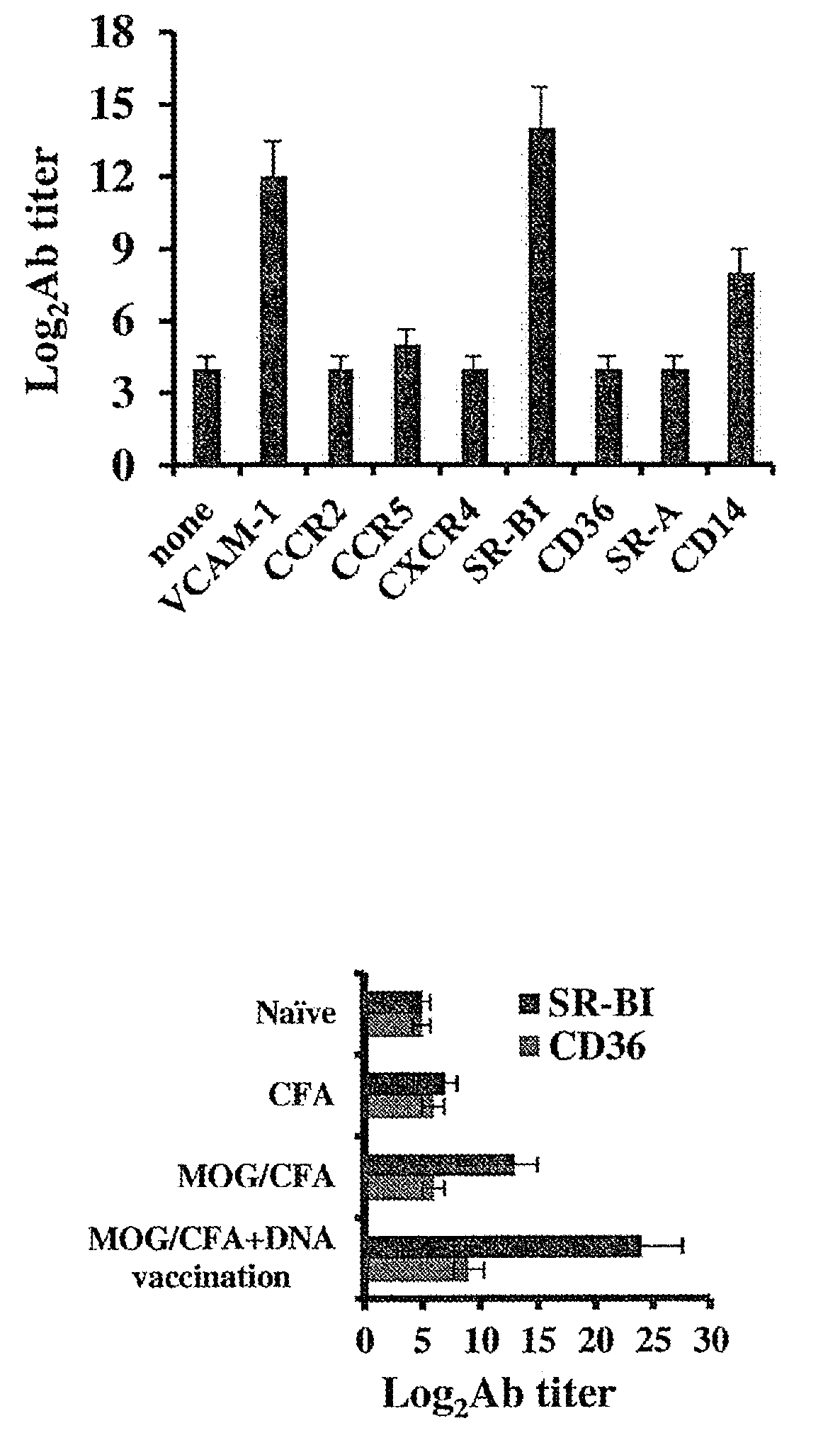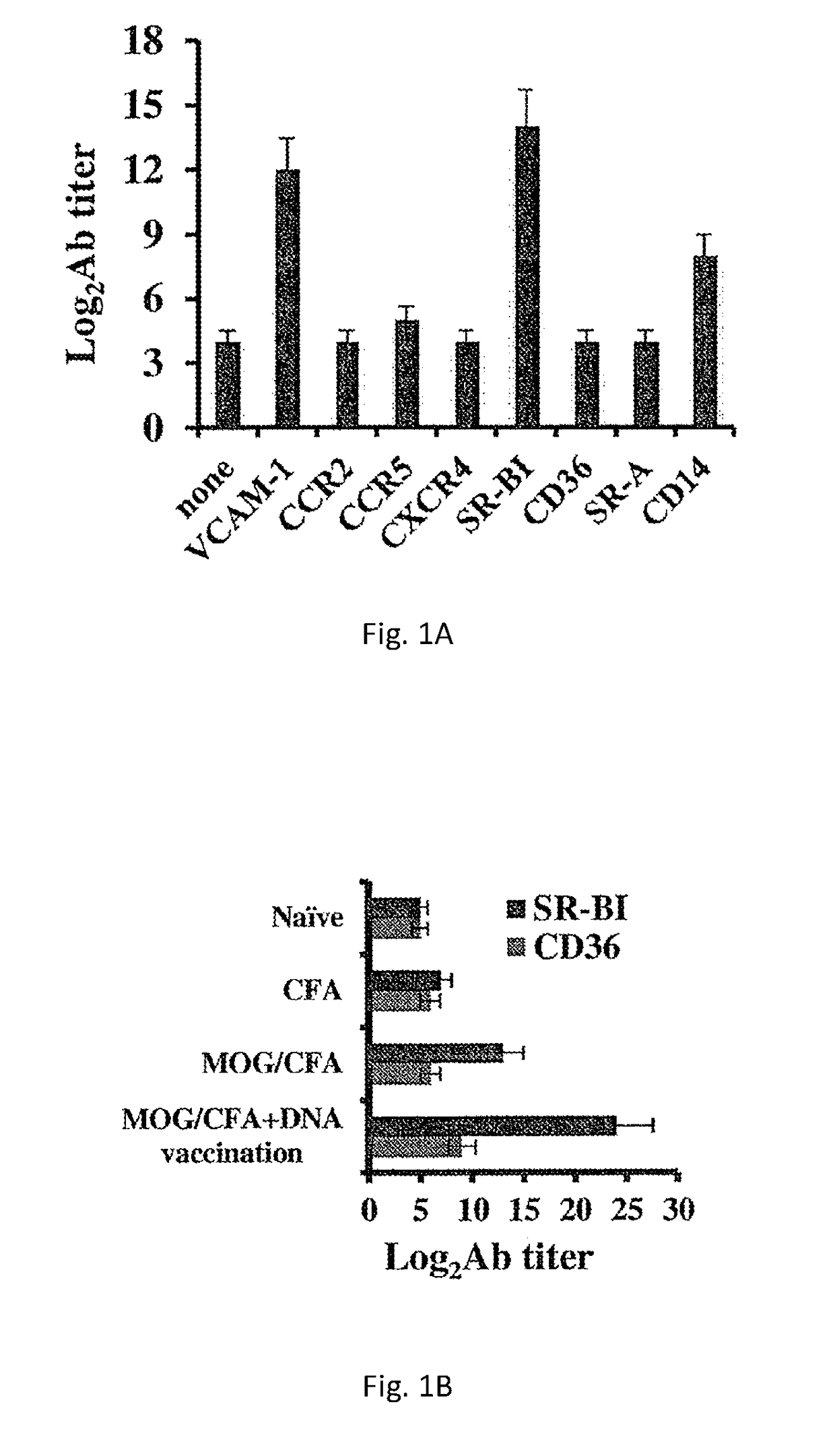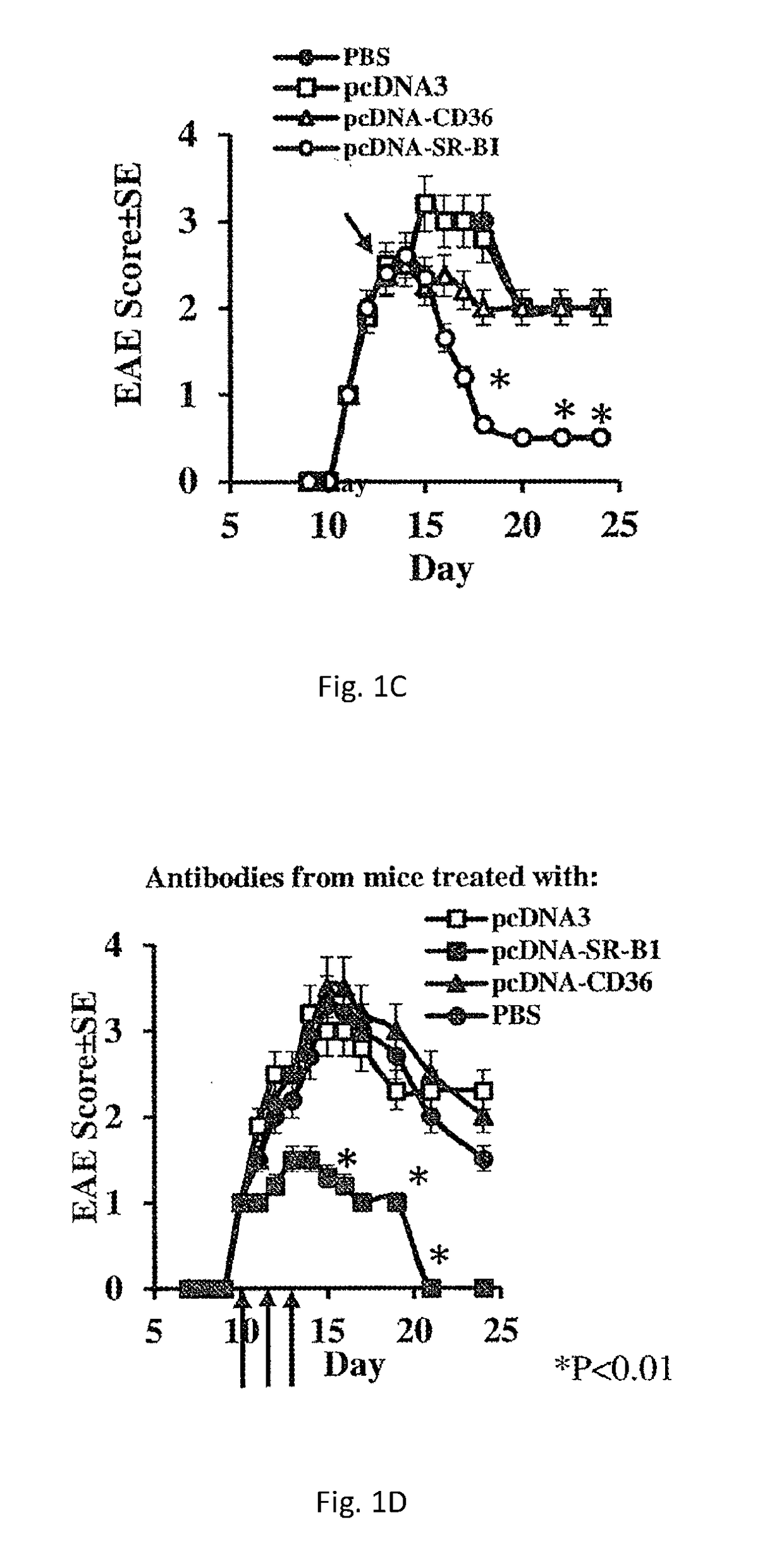Novel epitope as a target for therapy of inflammatory autoimmune diseases and graft rejection
a technology of inflammatory autoimmune diseases and new epitopes, applied in the field of new epitopes as a target for therapy of inflammatory autoimmune diseases and graft rejection, can solve the problems of inability to control the underlying, lack of effective cure, and inability to provide experimental results, so as to reduce the inflammatory response and prevent graft rejection
- Summary
- Abstract
- Description
- Claims
- Application Information
AI Technical Summary
Benefits of technology
Problems solved by technology
Method used
Image
Examples
example 1
EAE mice Exhibit an Autoantibody Response to SR-BI that, when Amplified, Suppresses an Ongoing Disease
[0229]In a screen to identify autoantibodies produced during active EAE, the extracellular domains of various chemokine receptors, adhesion receptors and SRs was cloned. Purified recombinant proteins were used to coat ELISA plates for the subsequent detection of the antibody response to each receptor in the screen by direct ELISA. EAE was induced in mice by injecting them with MOGp33-55 / CFA. At the onset of disease, serum was extracted and antibody titers were determined. FIG. 1A shows that EAE mice displayed an autoantibody response to the adhesion receptor VCAM-1 (log2Ab titer of 12±1 compared to 4±0.5,), SR-BI (log2Ab titer of 14±1.2 compared to 4±0.5,) and CD14 (log2Ab titer of 8±0.66 compared to 4±0.5,), but not to SR-A, CD36, CCR2, CCR5 and CXCR4. To amplify the production of SR-BI autoantibodies during active EAE, MOGp33-55 / CFA-treated mice were administered with plasmid DNA ...
example 2
Anti CLA-1 Autoantibodies Against the 273-283 AA Epitope are Present in the Sera of MS Patients
[0230]To explore the relevance of our findings to human disease, the antibody response to CLA-1 in the sera of multiple sclerosis (MS) patients was assessed. The study included 60 MS patients with demographic characteristics as described in Table 1. The vast majority of the patients (55 / 60) were diagnosed with relapsing-remitting MS and 5 others with relapsing progressive MS. Age matched healthy volunteers (23) and patients with viral encephalitis (6) served as control groups. Antibody response was determined at a single sera dilution of 1:500 using ELISA. FIG. 2A shows that almost 70% of MS patients displayed a significant antibody response to CLA-1 (68.3% compared to 4.3% in healthy controls), but not SR-A (8.3%) or CD36 (6.6%). Similarly to EAE mice (FIG. 1) an autoantibody response to CD14 in the MS subjects could be detected (23%). Patients with viral encephalitis did not mount any an...
example 3
Anti-SR-B1 / CLA-1 Autoantibodies Possess Anti-Inflammatory Properties
[0231]Next, the mechanism underlying the regulatory, and possibly protective, role of the autoantibodies was explored. PMA-induced macrophage-like THP-1 cells were pre-incubated with 0.5 μg / ml LPS, and 5 hours later, increasing concentrations of polyclonal anti-CLA-1 autoantibodies purified from pooled MS sera were added. After 48h, IL-10 and TNF-α levels were measured in the culture medium using standard ELISA method. Cultures supplemented with 10 μg / ml antibody showed an increase in IL-10 production and a reciprocal decrease in TNF-α (FIG. 2F). To examine if they might have a direct effect on CD4+ cells CD4+ T cells were isolated from PBL of three different healthy individuals and subjected to anti CD3 (1 μg / ml) and anti CD28 (1 μg / ml) induced activation. After 2h, E12 mAb was added at different concentrations and the level of IL-10 in the culture medium was measured 48 h later using standard ELISA method. In all ...
PUM
| Property | Measurement | Unit |
|---|---|---|
| distance | aaaaa | aaaaa |
| distance | aaaaa | aaaaa |
| distance | aaaaa | aaaaa |
Abstract
Description
Claims
Application Information
 Login to View More
Login to View More - R&D
- Intellectual Property
- Life Sciences
- Materials
- Tech Scout
- Unparalleled Data Quality
- Higher Quality Content
- 60% Fewer Hallucinations
Browse by: Latest US Patents, China's latest patents, Technical Efficacy Thesaurus, Application Domain, Technology Topic, Popular Technical Reports.
© 2025 PatSnap. All rights reserved.Legal|Privacy policy|Modern Slavery Act Transparency Statement|Sitemap|About US| Contact US: help@patsnap.com



